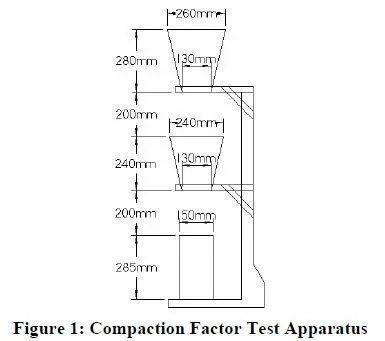The proctor test used for soils can also be used for lean, dry concrete mixes (Juvas 1994; Bartos, Sonebi, and Tamimi 2002). The test procedure for concrete is the same test procedure commonly used for soils. Either the standard Proctor test (ASTM D698) or the modified Proctor test (ASTM D1557) can be used. Four to six samples, each with varying moisture content, are compacted in a cylindrical mold using a drop hammer. The unit weight of each compacted sample is plotted against moisture content to determine the maximum dry unit weight and corresponding moisture content. In its guidelines for developing mix proportions for low slump concretes, ACI Committee 211 (2002) recommends using the proctor test.
Advantages:
The test is appropriate for low slump concrete mixtures that cannot be tested with conventional workability tests.
The test is simple and well known.
Disadvantages:
The test does not incorporate vibration, which is commonly used to compact low slump concretes.
The test is time consuming: performing the test requires four to six samples to be prepared to define the unit weight versus moisture content curve.
